Created 8th century | ||
 | ||
Material Iron, brass containing 85% copper | ||
The Coppergate Helmet (also known as York Helmet) is an 8th-century Anglo-Saxon helmet found in York. It is remarkably well preserved and, together with the Benty Grange, Pioneer, Shorwell, Sutton Hoo and Staffordshire helmets, is one of only six Anglo-Saxon helmets discovered to date.
Contents
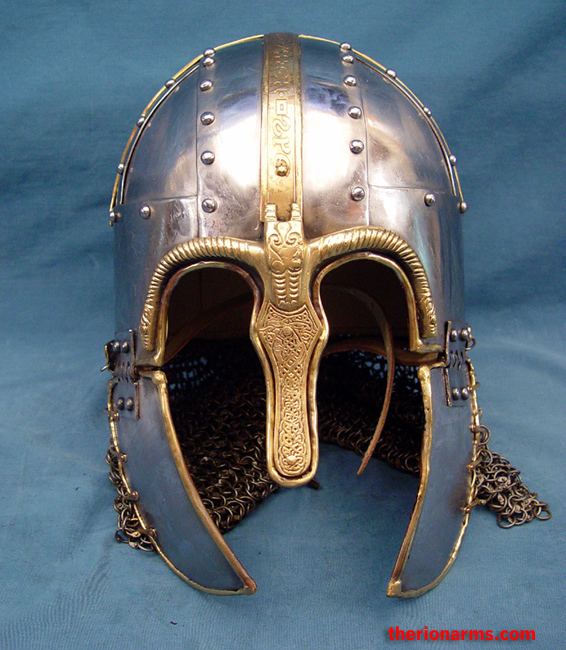
Construction
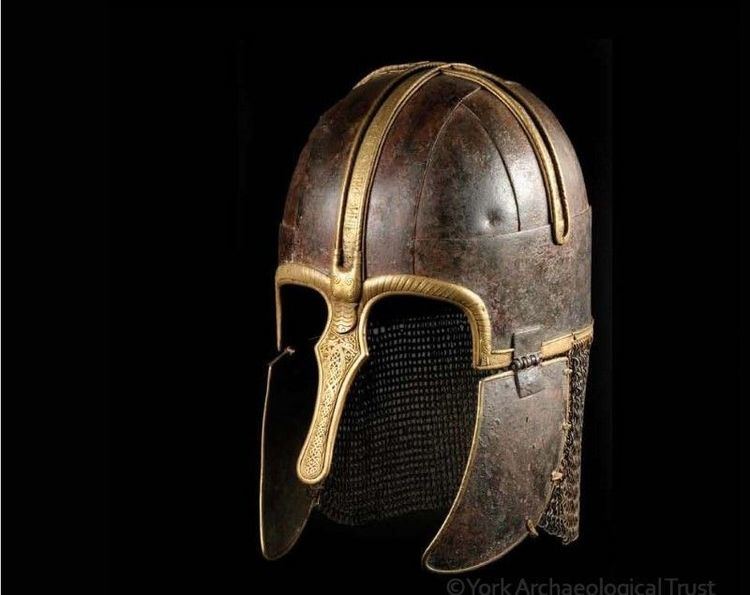
Like many other helmets of Germanic Western and Northern Europe in the Early Middle Ages the construction of Coppergate helmet is derivative of Late Roman helmet types.
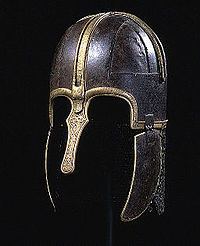
It has a rounded composite skull, the iron elements making up the skull are riveted together. Two deep cheek-pieces are attached to the skull by hinges. A mail curtain (camail) is attached to the lower rim of the helmet behind the cheek-pieces to defend the wearer's neck and an unusually large nose-guard (nasal) provided facial protection. The mail is remarkable in consisting of forge-welded links, rather than the far more common riveted links. It is richly decorated with brass ornamentation. On analysis, the helmet was found to be made of iron, with applied brass-work containing approximately 85 percent copper. Its basic construction is almost identical to another surviving Anglo-Saxon helmet, the Pioneer helmet. It is also very like the helmets depicted being worn by Anglo-Saxon Northumbrian cavalrymen on one of the Pictish Aberlemno Sculptured Stones, believed to depict the Battle of Dun Nechtain of 685.
Decoration

The helmet has two low crests of brass, one running from front to back the other from side to side, forming a cross shape when viewed from above. The brass banding within the crests bears a Latin inscription:
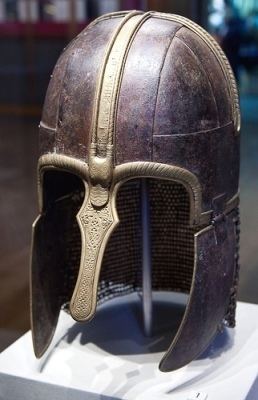
An alternative interpretation suggests the following translation:

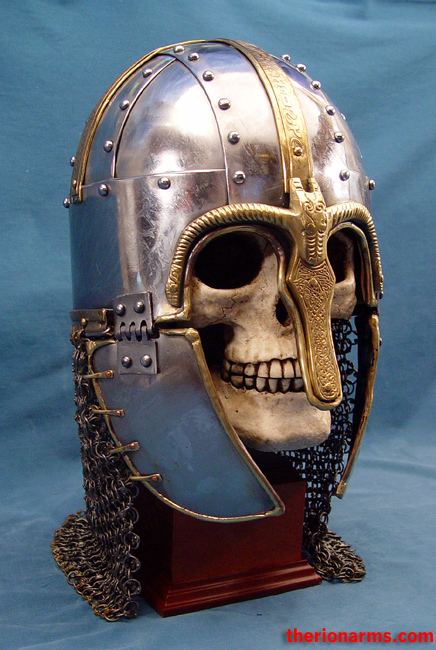
Oshere is a male Anglian name and XPI are the first three letters of the word Christos Χριστός (khristos) in Greek.
The brass crest terminates in a decorative animal head at the base of the nasal. The brass eyebrow decorations which flank the nasal also terminate in animal heads. The decoration of the nasal itself consists of two intertwined beasts, whose bodies and limbs degenerate into interlace ornament.
Discovery and conservation
The helmet had been hidden in a well found near what is now the JORVIK Viking Centre, and was damaged as it was uncovered by a mechanical digger in 1982. It is now in the Yorkshire Museum.
